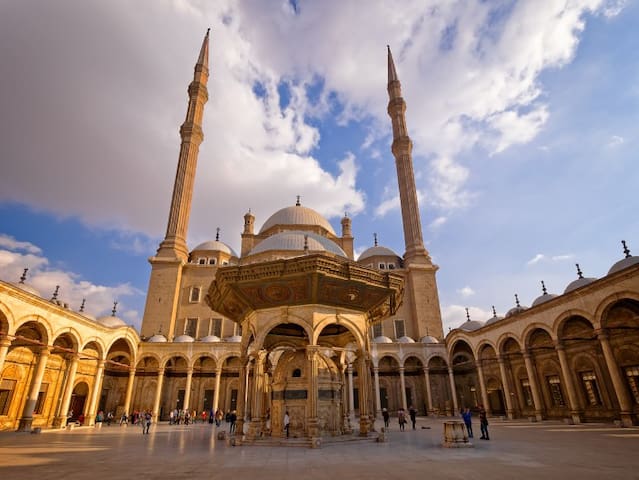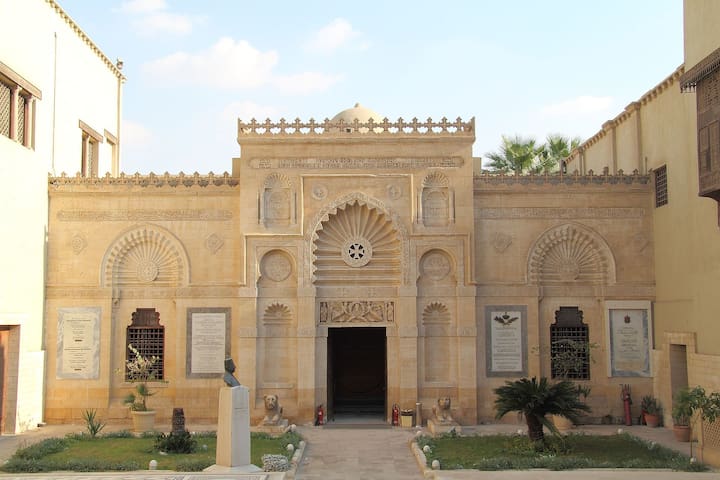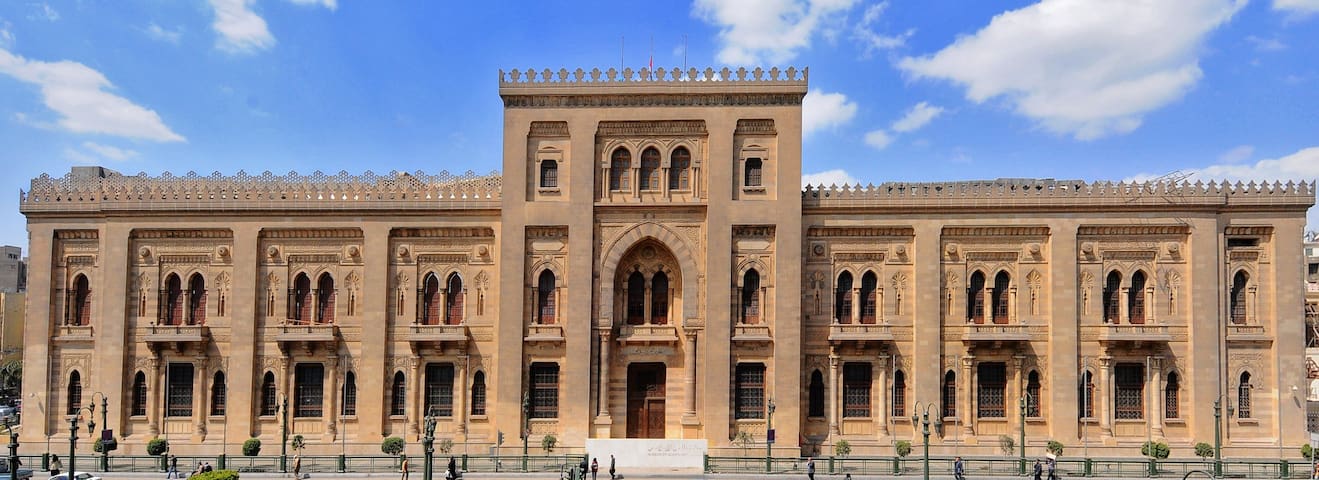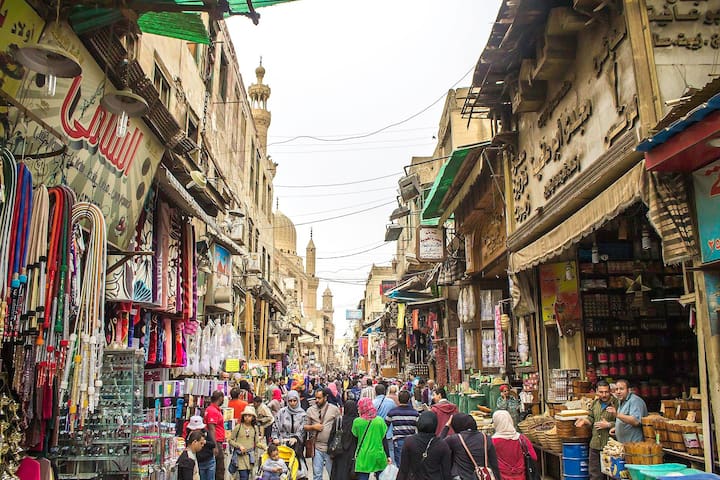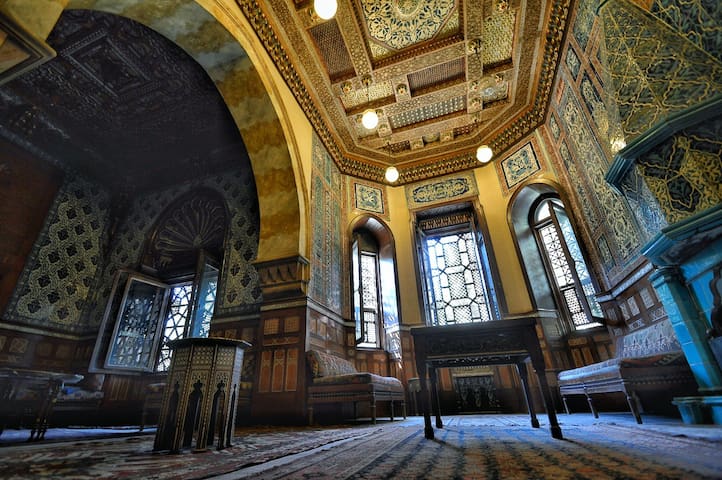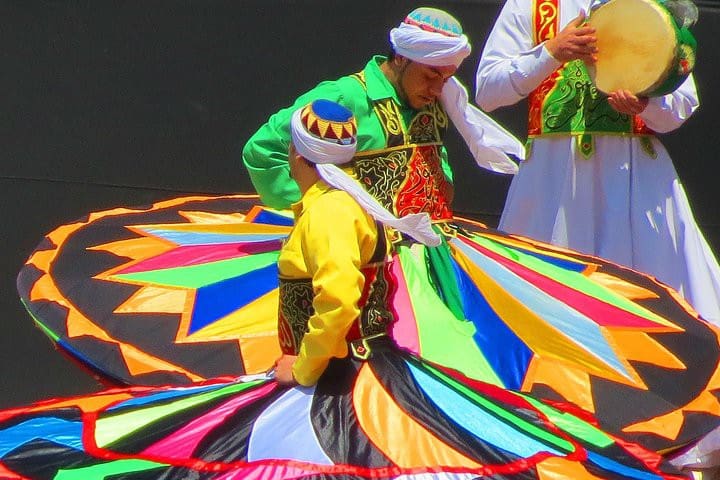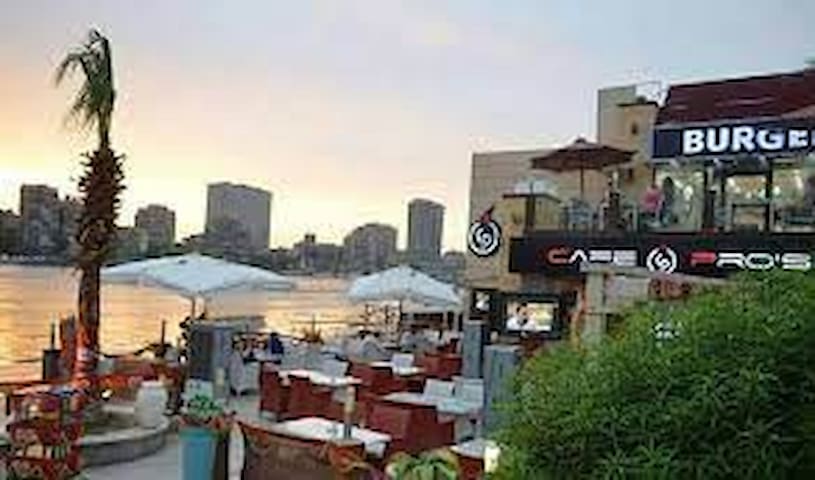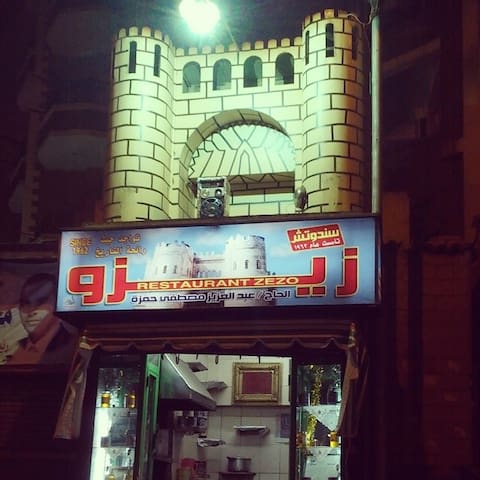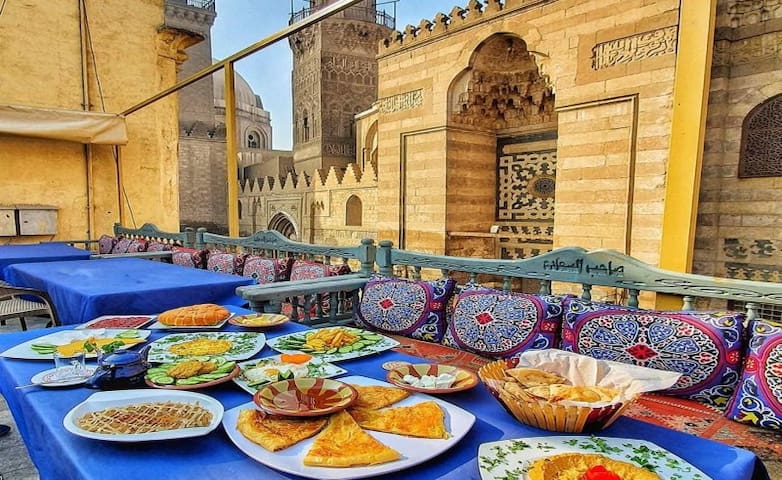Sightseeing
The Great Mosque of Muhammad Ali Pasha or Alabaster Mosque (Arabic: مسجد محمد علي; Turkish: Mehmet Ali Paşa Camii) is a mosque situated in the Citadel of Cairo in Egypt and was commissioned by Muhammad Ali Pasha between 1830 and 1848.
Situated on the summit of the citadel, this Ottoman mosque, the largest to be built in the first half of the 19th century, is, with its animated silhouette and twin minarets, the most visible mosque in Cairo.
萨拉丁城堡军事博物馆
The Great Mosque of Muhammad Ali Pasha or Alabaster Mosque (Arabic: مسجد محمد علي; Turkish: Mehmet Ali Paşa Camii) is a mosque situated in the Citadel of Cairo in Egypt and was commissioned by Muhammad Ali Pasha between 1830 and 1848.
Situated on the summit of the citadel, this Ottoman mosque, the largest to be built in the first half of the 19th century, is, with its animated silhouette and twin minarets, the most visible mosque in Cairo.
The Coptic Museum is a museum in Coptic Cairo, Egypt with the largest collection of Coptic Christian artifacts in the world.
15 locals recommend
The Coptic Museum
3 Mari GergesThe Coptic Museum is a museum in Coptic Cairo, Egypt with the largest collection of Coptic Christian artifacts in the world.
The Museum of Islamic Art (MIA) in Cairo, Egypt is considered one of the greatest museums in the world, with its exceptional collection of rare woodwork and plaster artefacts, as well as metal, ceramic, glass, crystal, and textile objects of all periods, from all over the Islamic world.
16 locals recommend
Museum of Islamic Arts
Port SaidThe Museum of Islamic Art (MIA) in Cairo, Egypt is considered one of the greatest museums in the world, with its exceptional collection of rare woodwork and plaster artefacts, as well as metal, ceramic, glass, crystal, and textile objects of all periods, from all over the Islamic world.
The Mosque of Ibn Tulun (Arabic: مسجد إبن طولون, romanized: Masjid Ibn Ṭūlūn) is located in Cairo, Egypt. It is one of the oldest mosques in Egypt as well as the whole of Africa surviving in its full original form, and is the largest mosque in Cairo in terms of land area. It is built around an open square courtyard which allows natural light to travel through. Ibn Tulun Mosque features ancient architecture styles of Egypt, its decorations being created from carved stucco and wood.[2] This mosque is a popular tourist attraction.
12 locals recommend
Mosque of Ibn Tulun
Ahmed Ibn Tolon Sq.The Mosque of Ibn Tulun (Arabic: مسجد إبن طولون, romanized: Masjid Ibn Ṭūlūn) is located in Cairo, Egypt. It is one of the oldest mosques in Egypt as well as the whole of Africa surviving in its full original form, and is the largest mosque in Cairo in terms of land area. It is built around an open square courtyard which allows natural light to travel through. Ibn Tulun Mosque features ancient architecture styles of Egypt, its decorations being created from carved stucco and wood.[2] This mosque is a popular tourist attraction.
The Giza pyramid complex, also called the Giza necropolis, is the site on the Giza Plateau in Greater Cairo, Egypt that includes the Great Pyramid of Giza, the Pyramid of Khafre, and the Pyramid of Menkaure, along with their associated pyramid complexes and the Great Sphinx of Giza. All were built during the Fourth Dynasty of the Old Kingdom of Ancient Egypt, between 2600 and 2500 BC. The site also includes several cemeteries and the remains of a workers village.
The site is at the edges of the Western Desert, approximately 9 kilometres (5.6 mi) west of the Nile River in the city of Giza, and about 13 kilometres (8 mi) southwest of the city centre of Cairo. Along with nearby Memphis, the site was inscribed on the UNESCO World Heritage List in 1979.[1]
The Great Pyramid and the Pyramid of Khafre are the largest pyramids built in ancient Egypt, and they have historically been common as emblems of Ancient Egypt in the Western imagination.[2][3] They were popularised in Hellenistic times, when the Great Pyramid was listed by Antipater of Sidon as one of the Seven Wonders of the World. It is by far the oldest of the Ancient Wonders and the only one still in existence.
93 locals recommend
Giza Necropolis
Al HaramThe Giza pyramid complex, also called the Giza necropolis, is the site on the Giza Plateau in Greater Cairo, Egypt that includes the Great Pyramid of Giza, the Pyramid of Khafre, and the Pyramid of Menkaure, along with their associated pyramid complexes and the Great Sphinx of Giza. All were built during the Fourth Dynasty of the Old Kingdom of Ancient Egypt, between 2600 and 2500 BC. The site also includes several cemeteries and the remains of a workers village.
The site is at the edges of the Western Desert, approximately 9 kilometres (5.6 mi) west of the Nile River in the city of Giza, and about 13 kilometres (8 mi) southwest of the city centre of Cairo. Along with nearby Memphis, the site was inscribed on the UNESCO World Heritage List in 1979.[1]
The Great Pyramid and the Pyramid of Khafre are the largest pyramids built in ancient Egypt, and they have historically been common as emblems of Ancient Egypt in the Western imagination.[2][3] They were popularised in Hellenistic times, when the Great Pyramid was listed by Antipater of Sidon as one of the Seven Wonders of the World. It is by far the oldest of the Ancient Wonders and the only one still in existence.
Khan el-Khalili (Arabic: خان الخليلي) is a famous bazaar and souq (or souk) in the historic center of Cairo, Egypt. Established as a center of trade in the Mamluk era and named for one of its several historic caravanserais, the bazaar district has since become one of Cairo's main attractions for tourists and Egyptians alike. It is also home to many Egyptian artisans and workshops involved in the production of traditional crafts and souvenirs. The name Khan el-Khalili historically referred to a single building in the area; today it refers to the entire shopping district.
95 locals recommend
Khan Al-Khalili
Khan el-Khalili (Arabic: خان الخليلي) is a famous bazaar and souq (or souk) in the historic center of Cairo, Egypt. Established as a center of trade in the Mamluk era and named for one of its several historic caravanserais, the bazaar district has since become one of Cairo's main attractions for tourists and Egyptians alike. It is also home to many Egyptian artisans and workshops involved in the production of traditional crafts and souvenirs. The name Khan el-Khalili historically referred to a single building in the area; today it refers to the entire shopping district.
The NMEC is the first of its kind in Egypt and the Arab world. It presents the full range of the richness and diversity of Egyptian civilization throughout the ages, from prehistoric times to the present day by focusing on its continuity and stability as demonstrated by its tangible and intangible heritage. The museum’s exceptional collection includes the royal mummies, which are exhibited in a new interactive display using 21st century cutting-edge technology to go beneath the wrappings and reveal their secrets, in addition to shedding light on the rituals and religious beliefs surrounding mummification in ancient Egypt.
24 locals recommend
The National Museum of Egyptian Civilization
Al Fostat StreetThe NMEC is the first of its kind in Egypt and the Arab world. It presents the full range of the richness and diversity of Egyptian civilization throughout the ages, from prehistoric times to the present day by focusing on its continuity and stability as demonstrated by its tangible and intangible heritage. The museum’s exceptional collection includes the royal mummies, which are exhibited in a new interactive display using 21st century cutting-edge technology to go beneath the wrappings and reveal their secrets, in addition to shedding light on the rituals and religious beliefs surrounding mummification in ancient Egypt.
The Mosque-Madrasa of Sultan Hassan (Arabic: مسجد ومدرسة السلطان حسن) is a monumental mosque and madrasa located in Salah al-Din Square in the historic district of Cairo, Egypt. It was built between 1356 and 1363 during the Bahri Mamluk period, commissioned by Sultan an-Nasir Hasan. The mosque was considered remarkable for its massive size and innovative architectural components, and is still considered one of the most impressive historic monuments in Cairo today
14 locals recommend
Mosque and Madrasa of Sultan Hassan
The Mosque-Madrasa of Sultan Hassan (Arabic: مسجد ومدرسة السلطان حسن) is a monumental mosque and madrasa located in Salah al-Din Square in the historic district of Cairo, Egypt. It was built between 1356 and 1363 during the Bahri Mamluk period, commissioned by Sultan an-Nasir Hasan. The mosque was considered remarkable for its massive size and innovative architectural components, and is still considered one of the most impressive historic monuments in Cairo today
Al-Muizz li-Din Allah al-Fatimi Street (Arabic: شارع المعز لدين الله الفاطمي), or al-Muizz street for short, is a major north-to-south street in the walled city of historic Cairo, Egypt. It is one of Cairo's oldest streets as it dates back to the foundation of the city (not counting the earlier Fustat) by the Fatimid dynasty in the 10th century, under their fourth caliph, Al-Mu'izz li-Din Allah (after whom the street is named).[1] Historically, it was the most important artery of the city and was often referred to as the Qasaba (or Qasabah). It constituted the main axis of the city's economic zones where its souqs (markets) were concentrated
8 locals recommend
Al Moez Ldin Allah Al Fatmi
Al Moez Ldin Allah Al FatmiAl-Muizz li-Din Allah al-Fatimi Street (Arabic: شارع المعز لدين الله الفاطمي), or al-Muizz street for short, is a major north-to-south street in the walled city of historic Cairo, Egypt. It is one of Cairo's oldest streets as it dates back to the foundation of the city (not counting the earlier Fustat) by the Fatimid dynasty in the 10th century, under their fourth caliph, Al-Mu'izz li-Din Allah (after whom the street is named).[1] Historically, it was the most important artery of the city and was often referred to as the Qasaba (or Qasabah). It constituted the main axis of the city's economic zones where its souqs (markets) were concentrated
Peacful historical places
The Hanging Church is named for its location above a gatehouse of Babylon Fortress, the Roman fortress in Coptic Cairo (Old Cairo); its nave is suspended over a passage. The church is approached by twenty-nine steps; early travelers to Cairo dubbed it "the Staircase Church". The land surface has risen by some six metres since the Roman period, so the Roman tower is mostly buried below ground, reducing the visual impact of the church's elevated position.[citation needed
The entrance from the street is through iron gates under a pointed stone arch. The nineteenth-century facade with twin bell towers is then seen beyond a narrow courtyard decorated with modern art biblical designs. Up the steps and through the entrance is a further small courtyard leading to the eleventh-century outer porch.[citation needed.
29 locals recommend
The Hanging Church
The Hanging Church is named for its location above a gatehouse of Babylon Fortress, the Roman fortress in Coptic Cairo (Old Cairo); its nave is suspended over a passage. The church is approached by twenty-nine steps; early travelers to Cairo dubbed it "the Staircase Church". The land surface has risen by some six metres since the Roman period, so the Roman tower is mostly buried below ground, reducing the visual impact of the church's elevated position.[citation needed
The entrance from the street is through iron gates under a pointed stone arch. The nineteenth-century facade with twin bell towers is then seen beyond a narrow courtyard decorated with modern art biblical designs. Up the steps and through the entrance is a further small courtyard leading to the eleventh-century outer porch.[citation needed.
he Manial Palace and Museum is a former Alawiyya dynasty era palace and grounds on Rhoda Island on the Nile. It is located in the Sharia Al-Saray area in the El-Manial district of southern Cairo, Egypt. The palace and estate has been preserved as an Antiquities Council directed historic house museum and estate, reflecting the settings and lifestyle of the late 19th- and early 20th-century Egyptian royal prince and heir apparent. The residence compound, composed of five separate and distinctively styled buildings, is surrounded by Persian gardens within an extensive English Landscape garden estate park, along a small branch of the Nile.
18 locals recommend
Prince Mohamed Ali Palace (Al Manial Palace)
1 السراياhe Manial Palace and Museum is a former Alawiyya dynasty era palace and grounds on Rhoda Island on the Nile. It is located in the Sharia Al-Saray area in the El-Manial district of southern Cairo, Egypt. The palace and estate has been preserved as an Antiquities Council directed historic house museum and estate, reflecting the settings and lifestyle of the late 19th- and early 20th-century Egyptian royal prince and heir apparent. The residence compound, composed of five separate and distinctively styled buildings, is surrounded by Persian gardens within an extensive English Landscape garden estate park, along a small branch of the Nile.
Art scene
The Cairo Opera House (Arabic: دار الأوبرا المصرية, Dār el-Opera el-Masreyya; literally "Egyptian Opera House"), part of Cairo's National Cultural Centre, is the main performing arts venue in the Egyptian capital. Home to most of Egypt's finest musical groups,
47 locals recommend
Cairo Opera House
Opera SquareThe Cairo Opera House (Arabic: دار الأوبرا المصرية, Dār el-Opera el-Masreyya; literally "Egyptian Opera House"), part of Cairo's National Cultural Centre, is the main performing arts venue in the Egyptian capital. Home to most of Egypt's finest musical groups,
This vast collection of 20th- and 21st-century Egyptian art is set in the green, well-groomed Gezira Exhibition Grounds, across from the Cairo Opera House. The museum’s highlights are Mahmoud Mukhtar’s deco-elegant bronze Bride of the Nile, along with Mahmoud Said’s painting Al Madina (The City, 1937). The museum was partially open (just the ground floor gallery; hence the free entry) due to ongoing restoration at the time of research. It's well worth a peek though if you're into art.
11 locals recommend
Museum Of Modern Egyptian Art
This vast collection of 20th- and 21st-century Egyptian art is set in the green, well-groomed Gezira Exhibition Grounds, across from the Cairo Opera House. The museum’s highlights are Mahmoud Mukhtar’s deco-elegant bronze Bride of the Nile, along with Mahmoud Said’s painting Al Madina (The City, 1937). The museum was partially open (just the ground floor gallery; hence the free entry) due to ongoing restoration at the time of research. It's well worth a peek though if you're into art.
El Gomhoureya Theater
12 El-GomhoreyaThe best local performances can be watched there!
Al Tannoura Egyptian Dance Heritage Show at Wekalet El Ghouri. u will enjoy this show (A MUST SEEN)...
Wekalet El Ghouri Arts Center
Al Tannoura Egyptian Dance Heritage Show at Wekalet El Ghouri. u will enjoy this show (A MUST SEEN)...
Night life
Good moods, so whether it's a tasty meal, delicious cocktail or a nice fix of live music you’re looking for, you’ll find it all here.
67 locals recommend
Cairo Jazz Club
197 26th of July CorridorGood moods, so whether it's a tasty meal, delicious cocktail or a nice fix of live music you’re looking for, you’ll find it all here.
Nile Maxim
Saraya El GeziraA belly dancing show and nice dinning on a local cruise!
Do u want to live as a local? to have a drink? just go there and u will have the true Egyptian experience
16 locals recommend
كافيه وبار الحرية
Do u want to live as a local? to have a drink? just go there and u will have the true Egyptian experience
Le Bistro
A nice local pub, where u can meet new people and drink!
After Eight
6 Kasr Al Nileenjoy a night with local music in Cairo!
Nice music, drink and positive vibes, u can meet interesting people people while u are dancing to international music!
Asia Bar
Nice music, drink and positive vibes, u can meet interesting people people while u are dancing to international music!
Food scene
Abou El Sid Restaurant
157 26th of July CorridorEnjoy nice Egyptian food!
Tajoury Oriental Restaurant - مطعم تاچوري
93 Abdulaziz Al SaudThe best food with local prices
A marina with a lot of restaurants overlooking the nile river, u can have a nice glass of wine and eat enjoying the sunset there!
Nile Lounge
Abdulaziz Al SaudA marina with a lot of restaurants overlooking the nile river, u can have a nice glass of wine and eat enjoying the sunset there!
Al-Azhar Park
Salah Salem StreetA huge park overseeing old Cairo, u can also eat there!
Zizo
١ El-GamaleyaA local restaurant for local food with local prices, I am sure u will enjoy it !
Saheb El Sa'ada
121 Al Motaz Ldin AllahA local restaurant with local music, in the heart of old Cairo... very nice views!
One of the oldest restaurant of downtown, u will enjoy nice drink and eat Egyptian food!
كافيه ريش Café Riche
17 Talaat HarbOne of the oldest restaurant of downtown, u will enjoy nice drink and eat Egyptian food!

